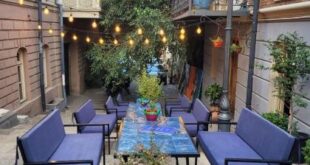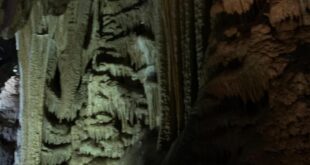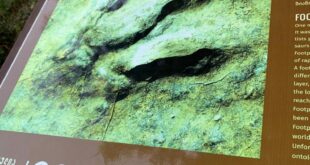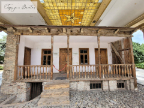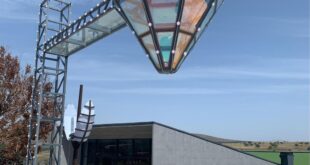A Peek into the Past-The Stone Town, Zanzibar
The afternoon sun hung low in the sky, dappled by the smoky, gray clouds when we reached the oldest part and cultural legacy of Zanzibar, the Stone Town. The maze of narrow alleyways, Stone Town, was inscribed a UNESCO World Heritage Site in 2000.
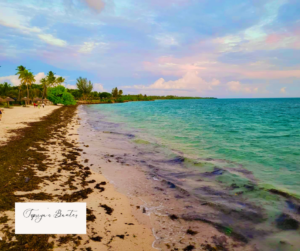
The historical center of Zanzibar, Stone Town, is located on the island of Unguja in the oldest part of Zanzibar City, the capital.
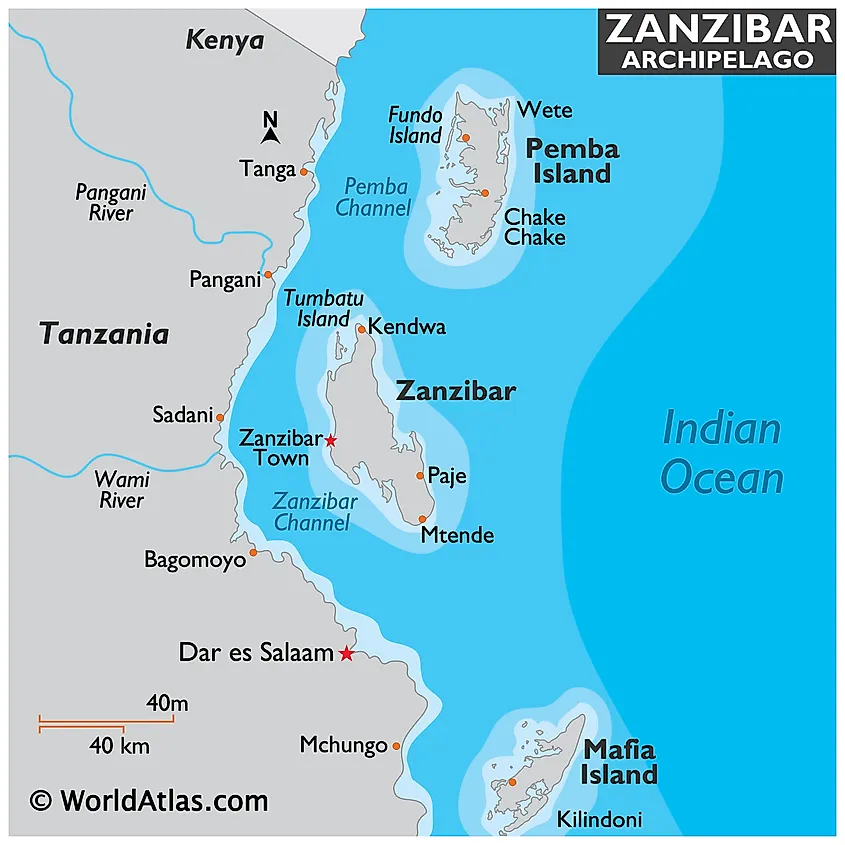
Our guide, Simon, an erudite scholar, and alternate- medicine practitioner, met us at the breezy waterfront. My eyes grazed against a fleet of traditional wooden dhows sailing past; a few bobbed around on the sheltered west coast as if eagerly awaiting their day in the sea.
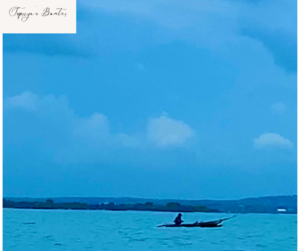
The knotted alleyways
We set up on foot behind him, traversing the knot of slender gullies soaking in the bustling energy of the bazaars, mosques, and grand houses planted on either side.
The side streets and surrounding lanes were peppered with makeshift pop-up stalls and small kiosks, their owners snoozing in the dwindling sunshine and whizzing into action at the sight of approaching tourists.
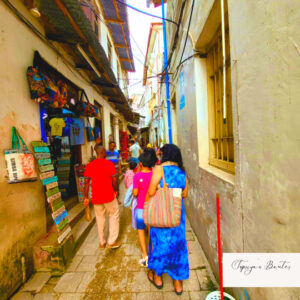
Multicolored Zanzibari spices, wooden earrings, shoes, flip-flops, fresh fruits, and dates shimmered from the stalls, keen to grab a wayfarer’s eye.
Forodhani Gardens
There was still time for the sundown and the vibrant energy of the famed night market was yet to pick up.
Every evening Forodhani Gardens transform into an open-air food market bustling with carts, baskets, temporary stalls, and makeshift tables. A festive, carnival-like atmosphere descends over the gardens under the twinkling light of lanterns. The Fishermen drag their dhows back to the sand, tourists lounge about, and locals scamper, setting shops or sampling the night market’s sea food delights.
Simon apprised us how the night market offers a medley of Arabic, Mediterranean and Indian cuisine with eclectic local delicacies. Since Husband and I are both vegetarians and not best equipped to handle foreign street food, we weren’t too sad about missing out on the food market.
Plop, Spatter, Splash!
The sounds echoed against the shadowy coast, followed by loud guffaws and peals of laughter. A few local youths filed near the seawall and took turns to jump off into the turquoise folds of the Indian Ocean, a sort of local sort that kept everyone regaled.
‘The activity picks up later in the evening,’ Simon said. It seemed just the seaside entertainment one would prefer with spicy Zanzibari kebabs or fried calamari.
The Arab Fort and the House of Wonders
Sidestepping speeding scooters and bicycles, steering clear of vendors with an array of wares displayed on plastic mats, we took refuge in the Arab Fort.
The Arab Fort (also called the Old Fort or Omani Fort, and by its local name Ngome Kongwe) is a heavy stone fortress with high, dark-brown walls built by Omani Arabs as a defense against the Portuguese invasions. But the space was also formerly a site of a Portuguese church, and that is precisely why the remnants of the old church can still be seen peeking from the inside walls.
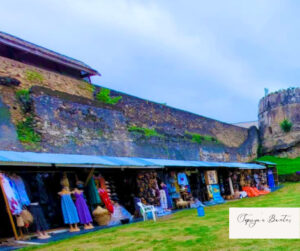
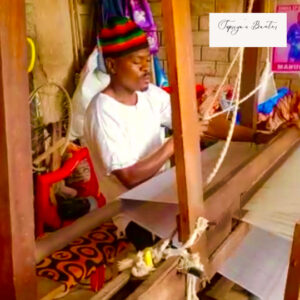
The renovated fort, replete with an amphitheater for cultural performances, against the backdrop of ruins of House of Wonders (Beit-al-Ajaib) and an assortment of craft, spices, and handloom stalls hides tales of a dark past in its bricks. Watch a weaver in action.
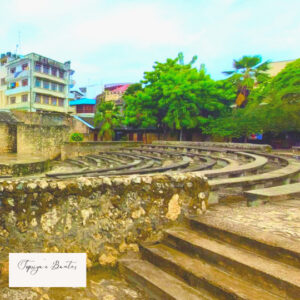
According to Simon, the open-air internal courtyard was documented in the forgotten pages of history as a cell–less prison. Hundreds of criminals/slaves were cast off in this squarish stadium, crammed together, untended and unattended. The criminals were also executed here, just outside the east wall.
Many historians even believe the Swahili word gereza, meaning prison, is thought to be derived from the Portuguese word ireja, meaning church.
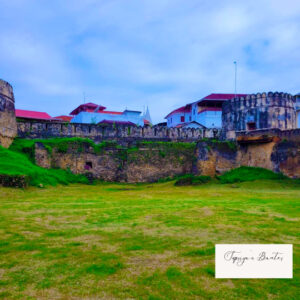
Later, the fort was reinvented as a depot for the railway line, which ran from Zanzibar Town to Bububu, named after the onomatopoeic sound of a train gliding on the railway tracks.
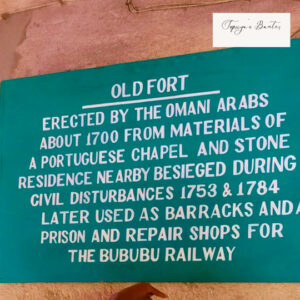
The Rich Tapestry
A short walk led us to the Old Dispensary, built by a wealthy Indian trader, Tharia Topan. One of the most decorated establishments of Stone Town, with large carved wooden balconies and stained-glass windows, it is a symbol of multicultural influence on Zanzibar.
Zanzibar is a conglomeration of Arab, Indian, European, and African traditions, given its history. The old city derives its name from a coral stone once used as the primary construction material, lending the town a striking, reddish warm hue.
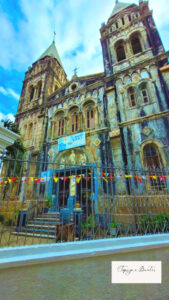
One of the few churches of Zanzibar
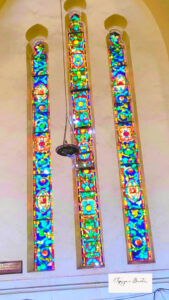
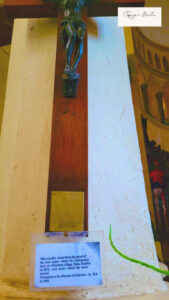
The Heart of Stone Town
A warren of ancient alleys escorted us to the heart of the stone town—the traditional houses built by the east African slave artisans for their wealthy Omani owners.
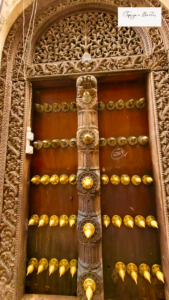
I could almost see those Arab slave-lords from two centuries ago in their silks, lounging in their courtyards, competing over the extravagance of their dwellings. Intricate brass-studded and carved wooden doors were one of the many elements. Silver-handled swords and Arab daggers dangled from their sashes as they sipped the coffee and sampled the cloves grown by their slaves recruited in plantations. But these scions are long gone, and most houses have been converted into government offices.
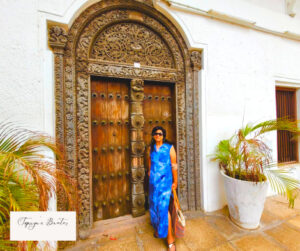
However, the relics of the past—the signature decorative doors remain, reciting yet another story of Zanzibar’s dark history.
Simon cited two main types: Indian-style doors had rounded tops, while those in Omani Arab style were rectangular.
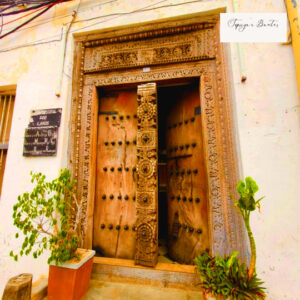
Arab carvings often included verses from Quran; Indian lotus flowers acted as emblems of prosperity; the pointed brass knobs spoke of wealth. The slave masters often paraded a pattern of chains used for shackling and restraining men in their doors to proclaim their superior position, clout, and wealth.
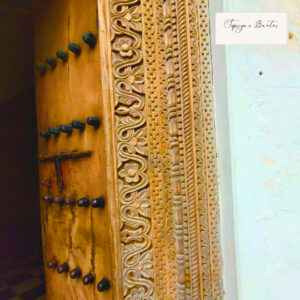
Birthplace Of Freddie Mercury
A walk down the labyrinth led us to St. Joseph’s Cathedral, one of the few churches still standing on the island, and Freddie Mercury’s (Farrokh Bulsara) family house. Having recently watched the movie—Queens, it amused me a great deal to find that the lead singer of the British band, Freddie Mercury, was born in Stone Town.
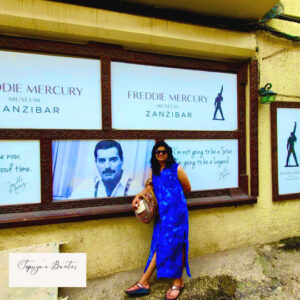
A chance meeting with a group of Masai marked the day. Their lean frames were wrapped in their traditional robe (Shuka), a red-checkered cloth, and adorned with ankle, wrist, arm bracelets, belts, and beady necklaces. Even with an ancient-looking rustic walking stick tucked in their elbow nook, it was hard to miss the influence of the modern world. One of the Masai sported aviators; the other, who looked like a teenager, couldn’t stop playing a video game on his smartphone. I guess it’s hard to keep a teenager from a video game across the globe!
The present day
Outside the falling old buildings, local artisans could be seen working on wooden frames and traditional boxes. Children peeked from ramshackle structures with wired windows, chattering across the street.
But what stole the show was, again, the slow and sedate pace of life inherent to this island. I couldn’t suppress a smile when we reached the Jaws Corner. A corner under a massive tree was primed with wooden benches and stone parapets. Colorful graffiti of sharks with their jaws wide open stared from the wall. In short, the conditions were ideal for people to languish, relax, and engage in idle chatter—exercise their jaws. That some people actually thronged the wooden benches, partaking in the exercise, was amusing, to say the very least.
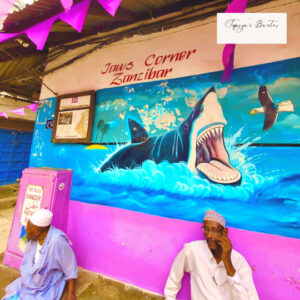
The slave monument
The Anglican Cathedral of Christ Church, a rare anomaly on the primary Muslim Island, is built on the site that previously hosted the largest slave market of Zanzibar.
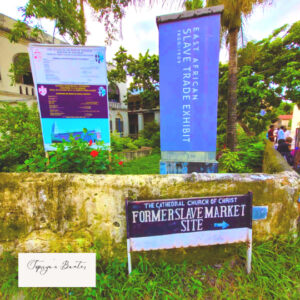
The altar marks the former whipping post—a spot where people seized from African Heartlands were flogged, lashed, tagged with the name of the slave trader, and paraded before the prospective buyers.
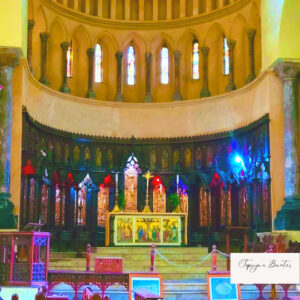
The purpose of whipping was to display the endurance of torture—men who bore the most pain were deemed the strongest and fetched the highest price.
A grim, below-ground monument depicting a group of five slaves—several men, women, and children, chained together, waiting to be sold, recounts Zanzibar’s brutal, barbaric suffering.
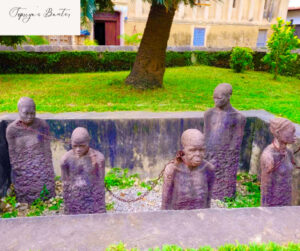
Sitting on the pews, with Simon’s voice droning in my ears, I could picture the nude slaves filed in 20-30 lines, marching down the streets, subdued by loyal slave guards, usually one of their own. Women with newly born strapped to their breasts dragging their feet, too frail to provide any nourishment to the child. The child, all skin-and-bones, wailing in hunger, its feathery skin bleeding because of being scraped and pared by heavy chains. Men with dejected faces and hunched shoulders resigned to their fate, struggling for each puff of air.
The claustrophobic chamber
A few yards from the church, a museum narrates the harrowing slave trading in extensive detail. And here in lies the slave chamber, a dark, windowless, stagnant, subsurface chamber for storing the slaves before the auction.
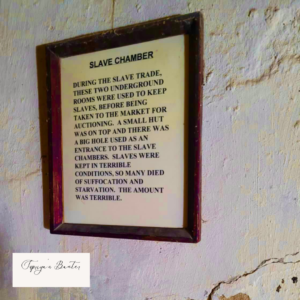
The space could hardly accommodate half a dozen tourists. I shuddered to imagine hundreds of slaves crammed in the claustrophobic space so tightly that even air couldn’t escape between them.
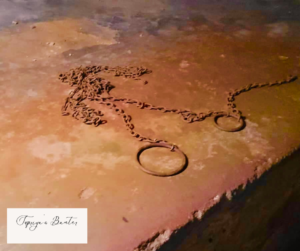
Imagine bellowing children and helpless mothers, squatting next to strangers, side by side, neither allowed to stand nor lie down nor move to obey nature’s calls. Imagine them squatting in their filth, their sweat mixing with their tears, each losing its meaning as it fell on the earth. Catch a glimpse of the slave chamber.
From the Pages of History
The banners at the museum depicted a gut-wrenching story of insatiable foreigners greedy for exotic wealth and locals who only became a pawn despite being blessed by nature’s bounty.
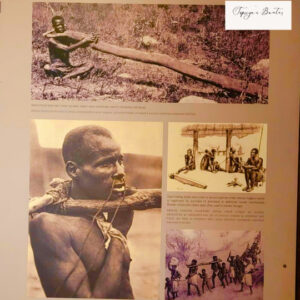
Here is a peek into the past:
The slaves were shipped to Oman to work in the plantations; many served as soldiers for warlords. Most dhow captains, crew, and porters were slaves.
Women were sold as concubines. According to the Islamic law of the coast, Muslim men could marry four wives but could keep as many women slaves (Suria) as they could afford.
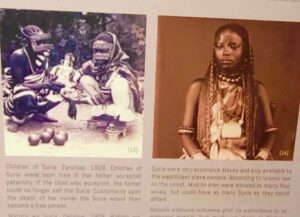
Many young boys had their genitals mutilated by their captors to serve as eunuchs, which were considered prized commodities. They were a symbol of wealth and guarded the harems.
When the ivory market expanded in the 18th century, the traders recruited thousands of East Africans into slavery to transport the tusks. The museum reports a rough estimate of five Africans—either dying or enslaved for every tusk that reached the coast. Of the thousands of tons of ivory that passed through Zanzibar, 75 percent was shipped to Connecticut, USA, and shaped into billiard balls, piano keys, and other expressions of exotic assets.
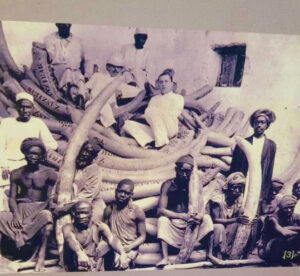
Ironically, slavery was abolished by Britain—the very nation that initiated the Atlantic slave-trading system. The Britishers dominated the slave trading for two hundred years before the Omani Sultanate took it over.
The heart-wrenching wails, the rattling chain, the crack of the whip, and the screams of those men still hem the Stone Town. The specters of the past still crowd its air.
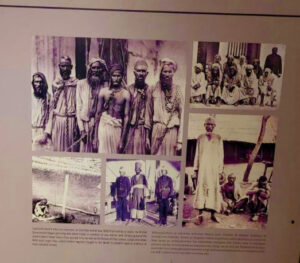
And that’s Stone Town’s primary draw: the chance to rewind the clock. It is as if the history is stamped right across the walls and facades of this ancient town and would reveal itself if you only look close enough.
Do I Recommend the Stone Town Tour?
Yes!
Of course, yes!
The peek into the past is unlike any other, a dark tale that we as citizens of the world should never forget.
Forodhani markets are a must-visit for sea food aficionados.
A Few Pointers
A sensible pair of walking shoes would do you a world of good as the tour entails a lot of walking.
Though not a must, it is advisable to dress up modestly. Zanzibar is a predominantly Muslim country, and it doesn’t hurt to respect local traditions and practices.
Consider mosquito repellent, sunscreens, bottled water, and sunglasses as essentials.
Smaller denominations of Tanzanian shillings will come in handy if you get enchanted by some knick knack or a traditional souvenir.
If visiting Forodhani food markets, steer clear of the touts and only approach the primary seller.
Continue Reading
You can check out my other posts about this beautiful country.
The Residence, Zanzibar-A Paradisial Stay
An Afternoon at a Fishing Village in Zanzibar
A Rendezvous with the Giant Aldabra Centurions—the Prison Island, Zanzibar
Jozani Chawka Bay National Park- A morning in the enchanted forests of Zanzibar
Maalum Caves-Zanzibar’s best-kept secret!
 Supriya's Banter
Supriya's Banter
